
Oslo: The Nordic Gem of Culture and Nature
Discover Oslo: A harmonious blend of modern architecture, rich history, and breathtaking natural beauty, perfect for both urban explorers and nature enthusiasts.
Oslo, the capital of Norway, is a city that beautifully blends modernity with rich history. Nestled between the Oslofjord and lush forests, Oslo offers a unique mix of urban life and natural beauty. The city is known for its green spaces and museums, making it a perfect destination for both city explorers and nature lovers. A visit to Oslo would be incomplete without exploring its impressive waterfront area, Aker Brygge, where you can enjoy stunning views, dine at top-notch restaurants, and visit the Nobel Peace Center. The city is also home to the iconic Opera House, which stands as a symbol of contemporary architecture. Here, you can walk on the rooftop and get a panoramic view of the city and the fjord. For history enthusiasts, the Viking Ship Museum offers a fascinating glimpse into the Viking era with its well-preserved ships and artifacts. The Fram Museum and the Kon-Tiki Museum provide captivating insights into Norway’s maritime history and polar explorations. Art lovers will find the Munch Museum and the Vigeland Sculpture Park equally enthralling, showcasing the works of Norway’s most renowned artists. Nature is never far away in Oslo. Take a short trip to the Nordmarka forest for hiking, skiing, or just to enjoy the tranquility of the Norwegian wilderness. The city also boasts beautiful parks like Frogner Park, where you can relax and admire the famous Vigeland sculptures. For a unique experience, visit the Holmenkollen Ski Jump and Museum, where you can learn about the history of skiing and enjoy breathtaking views of the city from the top of the ski jump. Oslo’s vibrant cultural scene is complemented by its commitment to sustainability, making it one of the greenest cities in the world. With excellent public transportation and a range of accommodation options, Oslo is a city that welcomes visitors with open arms and offers a memorable experience for everyone.
Local tips in Oslo
- Purchase an Oslo Pass for free entry to many museums and attractions, as well as free public transportation.
- Visit the Vigeland Sculpture Park early in the morning to avoid crowds and enjoy a peaceful experience.
- Take a fjord cruise for a unique perspective of Oslo’s stunning landscape and waterfront.
- Explore the Grünerløkka district for trendy shops, cafes, and vibrant street art.
- Try traditional Norwegian dishes like 'rakfisk' and 'lutefisk' at local restaurants for an authentic culinary experience.
- Check the weather and dress in layers, as Oslo’s weather can be unpredictable.
Neighbourhoods in Oslo
Oslo: The Nordic Gem of Culture and Nature
Oslo, the capital of Norway, is a city that beautifully blends modernity with rich history. Nestled between the Oslofjord and lush forests, Oslo offers a unique mix of urban life and natural beauty. The city is known for its green spaces and museums, making it a perfect destination for both city explorers and nature lovers. A visit to Oslo would be incomplete without exploring its impressive waterfront area, Aker Brygge, where you can enjoy stunning views, dine at top-notch restaurants, and visit the Nobel Peace Center. The city is also home to the iconic Opera House, which stands as a symbol of contemporary architecture. Here, you can walk on the rooftop and get a panoramic view of the city and the fjord. For history enthusiasts, the Viking Ship Museum offers a fascinating glimpse into the Viking era with its well-preserved ships and artifacts. The Fram Museum and the Kon-Tiki Museum provide captivating insights into Norway’s maritime history and polar explorations. Art lovers will find the Munch Museum and the Vigeland Sculpture Park equally enthralling, showcasing the works of Norway’s most renowned artists. Nature is never far away in Oslo. Take a short trip to the Nordmarka forest for hiking, skiing, or just to enjoy the tranquility of the Norwegian wilderness. The city also boasts beautiful parks like Frogner Park, where you can relax and admire the famous Vigeland sculptures. For a unique experience, visit the Holmenkollen Ski Jump and Museum, where you can learn about the history of skiing and enjoy breathtaking views of the city from the top of the ski jump. Oslo’s vibrant cultural scene is complemented by its commitment to sustainability, making it one of the greenest cities in the world. With excellent public transportation and a range of accommodation options, Oslo is a city that welcomes visitors with open arms and offers a memorable experience for everyone.
When is the best time to go to Oslo?
Iconic landmarks you can’t miss
Oslo Opera House
Discover the stunning Oslo Opera House - a masterpiece of architecture and culture in the heart of Norway's capital, offering breathtaking views and world-class performances.

Frognerparken
Discover Frognerparken, Oslo's stunning urban park filled with exquisite sculptures, lush gardens, and a vibrant atmosphere perfect for relaxation and exploration.

The Vigeland Park
Explore the breathtaking Vigeland Park in Oslo, featuring over 200 iconic sculptures by Gustav Vigeland amidst stunning gardens and serene landscapes.

Akershus Fortress
Explore the captivating history and breathtaking views at Akershus Fortress, a must-visit landmark in Oslo, Norway.

Viking Ship Museum
Explore the Viking Ship Museum in Oslo for a captivating dive into Norway's rich maritime history and the legendary Viking culture.
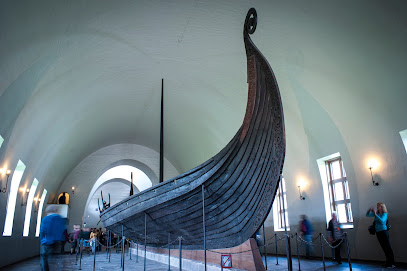
The Royal Palace
Explore the Royal Palace in Oslo, a stunning neoclassical landmark showcasing Norway's royal heritage and beautiful gardens.

The Norwegian Museum of Cultural History
Discover Norway's vibrant heritage and traditions at the Norwegian Museum of Cultural History, featuring fascinating exhibits and charming outdoor displays.

The Botanical Garden
Explore The Botanical Garden in Oslo, a lush paradise featuring diverse plant species and beautiful landscapes, perfect for nature lovers and serene strolls.

The National Museum
Discover Norway's artistic heritage at The National Museum in Oslo, home to an extensive collection of art from renowned artists and designers.

Oslo Cathedral
Explore the rich history and stunning architecture of Oslo Cathedral, a must-visit spiritual and cultural landmark in Norway's vibrant capital.

Slottsparken
Experience the lush beauty and rich history of Slottsparken, Oslo's enchanting park featuring stunning gardens and iconic monuments.

Østbanehallen
Discover Østbanehallen, Oslo's historic shopping mall blending local culture, dining, and unique boutiques for an unforgettable experience.

The Tiger
Discover The Tiger, an iconic sculpture at Jernbanetorget, a must-visit landmark symbolizing Oslo's rich culture and history in the heart of Norway's capital.

Museo Polar Ship
Discover the spirit of polar exploration at the Fram Museum in Oslo, where adventure and history come alive aboard the legendary ship Fram.

Oslo City Hall
Explore Oslo City Hall, a striking architectural marvel and cultural hub, home to the Nobel Peace Prize ceremony and rich in history and artistry.

Unmissable attractions to see
Oslo Opera House
Experience the breathtaking architecture and world-class performances at the Oslo Opera House, a cultural jewel in the heart of Norway's capital.

The Vigeland Park
Explore The Vigeland Park in Oslo, an open-air museum filled with over 200 remarkable sculptures by Gustav Vigeland, set in a beautifully landscaped park.

Frognerparken
Discover the beauty and artistry of Frognerparken, Oslo's largest park, featuring the iconic Vigeland Sculpture Park and lush landscapes.

Akershus Fortress
Discover the rich history and stunning architecture of Akershus Fortress in Oslo, a captivating blend of culture and scenic beauty.

The Royal Palace
Explore The Royal Palace in Oslo, Norway, where history, architecture, and stunning gardens converge to create an unforgettable royal experience.

The Fram Museum
Discover Norway's polar exploration legacy at The Fram Museum in Oslo, home to the iconic ship Fram and engaging exhibits on Arctic adventures.

Viking Ship Museum
Explore Norway's maritime heritage at the Viking Ship Museum, home to the world's best-preserved Viking ships and rich historical exhibits.

Munch
Explore the emotional depths of Edvard Munch's masterpieces at the Munch Museum in Oslo, Norway's premier art destination.

The Norwegian Museum of Cultural History
Discover Norway's past at The Norwegian Museum of Cultural History, a captivating blend of history, culture, and stunning architecture in the heart of Oslo.

The Botanical Garden
Explore the tranquil beauty of The Botanical Garden in Oslo, where diverse plant species and serene landscapes create a perfect escape.

The National Museum
Experience Norway's artistic legacy at The National Museum, showcasing masterpieces from Edvard Munch to contemporary design in a stunning architectural setting.

Holmenkollen Ski Museum
Explore the rich history of skiing at Holmenkollen Ski Museum in Oslo, Norway, with breathtaking views and fascinating exhibits.

Oslo Spektrum
Discover Oslo Spektrum, the premier arena for concerts and events in the heart of Oslo, where culture and excitement come alive.

National Theater
Discover the National Theater in Oslo, a cultural landmark offering world-class performances and a glimpse into Norway's vibrant arts scene.

Oslo Cathedral
Explore the stunning Oslo Cathedral, a masterpiece of architecture and spirituality in the heart of Norway's capital, offering art, history, and serenity.

Essential places to dine
Den Glade Gris
Discover authentic Norwegian flavors at Den Glade Gris, Oslo's premier traditional restaurant showcasing local cuisine and culture.

Louise Restaurant & Bar
Experience exquisite Norwegian cuisine with stunning waterfront views at Louise Restaurant & Bar in Oslo.

Lorry Restaurant
Discover the flavors of Norway at Lorry Restaurant in Oslo - where tradition meets modern dining in a warm atmosphere.

Dinner Restaurant
Discover authentic Chinese flavors at Dinner Restaurant in Oslo - where every dish is a celebration of Asian culinary traditions.

Way Down South
Experience authentic American barbecue at Way Down South in Oslo’s Grünerløkka—where flavor meets tradition in every bite.

Seaport Restaurant - Sørenga/Bjørvika
Experience culinary diversity at Seaport Restaurant in Oslo with exquisite dishes ranging from Italian pizza to Turkish delights—all by the beautiful waterfront.

Rorbua Aker Brygge
Experience authentic Norwegian cuisine at Rorbua Aker Brygge with stunning waterfront views in Oslo.

Ekebergrestauranten
Experience fine dining at Ekebergrestauranten with stunning views over Oslo's fjord and exquisite Norwegian cuisine.
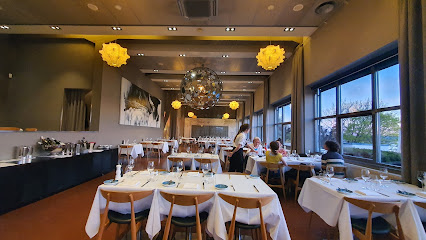
Skansen
Savor authentic Norwegian cuisine at Skansen in Oslo – where tradition meets taste in every dish.

Café Cathedral
Discover delightful flavors at Café Cathedral in Oslo - where local ingredients meet cozy ambiance for an unforgettable dining experience.

Der Peppern Gror Rådhusplassen
Experience authentic Indian flavors in Oslo at Der Peppern Gror Rådhusplassen – where every meal is a celebration.

Vaaghals
Experience the best of Norwegian cuisine at Vaaghals - where tradition meets innovation in every dish.
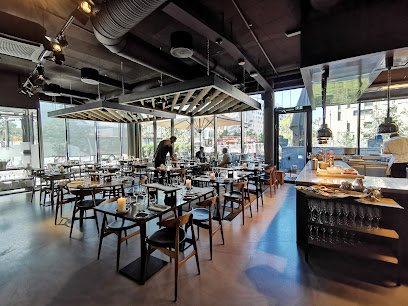
Elias mat & sånt
Experience authentic Norwegian cuisine at Elias mat & sånt in Oslo's vibrant Sentrum - where tradition meets modern taste.

Restaurant Schrøder
Experience the essence of Norwegian cuisine at Restaurant Schrøder in Oslo—where tradition meets taste in every delightful dish.

Skur 33
Experience exquisite Italian cuisine and fresh seafood at Skur 33, a picturesque waterfront restaurant in Oslo.

Markets, malls and hidden boutiques
Oslo City
Discover Oslo City - your ultimate shopping destination in the heart of Oslo, featuring top brands, dining delights, and a vibrant atmosphere.

Outland
Discover the magic of comics and collectibles at Outland, Oslo's ultimate destination for book and pop culture enthusiasts.

Paleet
Experience Oslo’s vibrant shopping scene at Paleet, where fashion meets culinary delight in a stylish urban environment.

Steen & Strøm Department Store
Explore Steen & Strøm, Oslo's historic department store offering luxury shopping, gourmet food, and delightful cafes in the heart of the city.
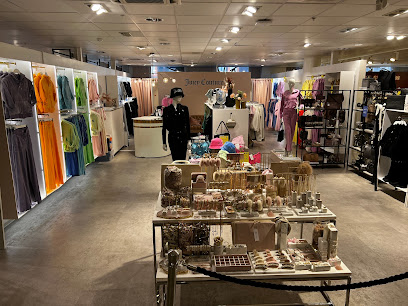
Gunerius Shopping Center
Explore Gunerius Shopping Center, Oslo's vibrant retail hub offering diverse shops, delightful eateries, and an inviting atmosphere for every shopper.

Arkaden Shopping
Experience the vibrant shopping scene at Arkaden Shopping in Oslo, where retail therapy meets local culture and culinary delights.

GlasMagasinet Stortorvet
Experience the charm of GlasMagasinet Stortorvet, Oslo's elegant shopping mall featuring luxury brands, local boutiques, and delightful eateries.

EGER
Explore EGER in Oslo for a unique shopping experience with diverse stores, delightful dining, and an energetic atmosphere.

WayNor
Discover authentic Norwegian souvenirs at WayNor, the premier souvenir store in the heart of Oslo, showcasing local craftsmanship and unique gifts.

Shangri-la
Discover unique gifts and local crafts at Shangri-la, a charming gift shop in the heart of Oslo, perfect for capturing the essence of Norway.

UFF Vintage Heaven
Explore UFF Vintage Heaven in Oslo for unique vintage clothing and eco-friendly finds that add character to your wardrobe.

Alle Tiders Shop - Suvenir og outdoor butikk!
Discover unique souvenirs and stylish outdoor gear at Alle Tiders Shop in the heart of Oslo, where Norwegian culture meets modern fashion.
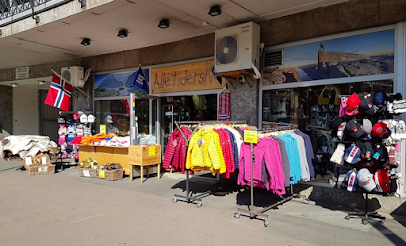
Flying Tiger Copenhagen
Explore the whimsical world of Flying Tiger Copenhagen in Oslo, where unique gifts and playful designs await every visitor.

Norway Designs
Discover the essence of Scandinavian design at Norway Designs, a treasure trove of unique Norwegian products and craftsmanship in Oslo.

Frøken Dianas Salonger
Discover unique vintage clothing and accessories at Frøken Dianas Salonger in Oslo’s Grünerløkka, a fashion haven for vintage lovers.

Essential bars & hidden hideouts
Crow Bar & Brewery
Experience Oslo's vibrant brewing culture at Crow Bar & Brewery, offering craft beers and delicious pub fare in a lively atmosphere.

The Dubliner Folk Pub
Experience the heart of Ireland at The Dubliner Folk Pub in Oslo, where traditional tastes and live music create an unforgettable atmosphere.

HIMKOK Storgata Destilleri
Discover HIMKOK Storgata Destilleri in Oslo – a cocktail haven blending creativity, local flavors, and a vibrant nightlife experience.

Sir Winston's Public House
Experience the vibrant atmosphere of Sir Winston's Public House in Oslo, where great food, live music, and a welcoming crowd await you.

Dr. Jekyll’s Pub
Discover Dr. Jekyll’s Pub in Oslo: Where great drinks, delicious food, and a lively atmosphere come together for an unforgettable experience.

Torggata Botaniske
Discover Torggata Botaniske, Oslo's premier cocktail bar in Grünerløkka, blending botanical beauty with innovative mixology for an unforgettable night out.

Nedre Løkka Cocktailbar & Selskapslokaler
Discover the vibrant cocktail culture at Nedre Løkka Cocktailbar in Oslo's artistic Grünerløkka district, where every sip tells a story.

SVANEN Cocktailbar
Discover the artistry of mixology at SVANEN Cocktailbar, Oslo's premier destination for exquisite cocktails and a vibrant nightlife experience.

Angst
Discover the lively atmosphere of Angst Bar in Oslo, where exceptional drinks and vibrant nightlife await every visitor.
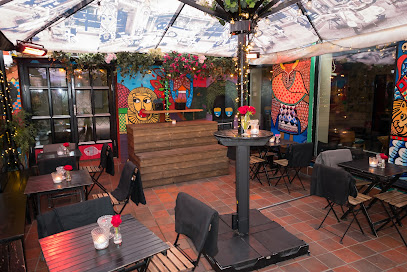
Summit Bar
Experience the heights of luxury at Summit Bar in Oslo, where exquisite cocktails and breathtaking views meet for an unforgettable night out.

Eight
Discover the vibrant nightlife of Oslo at Eight Bar, offering unique drinks and a stylish atmosphere to unwind and socialize.

Bar Boca
Experience Oslo's vibrant nightlife at Bar Boca in Grünerløkka, where craft cocktails and a lively atmosphere await every visitor.

F6 Cocktailbar
Experience the sophistication of F6 Cocktailbar in Oslo, where expertly crafted cocktails and a vibrant nightlife atmosphere await you.
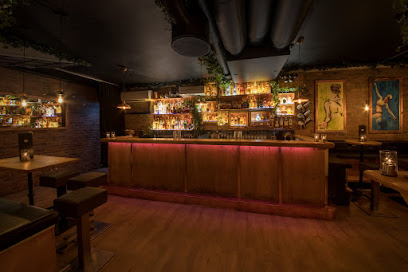
The Pub
Experience Oslo's nightlife at The Pub, a lively cocktail bar in Majorstuen offering an extensive drink menu and a vibrant atmosphere.

Bar *ISM
Experience Oslo's vibrant nightlife at Bar *ISM, known for its innovative cocktails and chic atmosphere in the heart of the city.

Local Phrases
-
- HelloHei
[hay] - GoodbyeHa det
[ha deh] - YesJa
[yah] - NoNei
[nay] - Please/You're welcomeVær så god
[ver sor goo] - Thank youTakk
[tahk] - Excuse me/SorryUnnskyld
[oonskyld] - How are you?Hvordan har du det?
[hvordan har doo deh] - Fine. And you?Bra. Og du?
[bra oh doo] - Do you speak English?Snakker du engelsk?
[snah-kker doo engelsk] - I don't understandJeg forstår ikke
[yay for-stor eekkeh]
- HelloHei
-
- I'd like to see the menu, pleaseJeg vil gjerne se menyen, takk
[yay veel yer-neh sey mene-yen tahk] - I don't eat meatJeg spiser ikke kjøtt
[yay spee-ser eekkeh shøtt] - Cheers!Skål!
[skohl] - I would like to pay, pleaseJeg vil gjerne betale, takk
[yay veel yer-neh beh-tah-leh tahk]
- I'd like to see the menu, pleaseJeg vil gjerne se menyen, takk
-
- Help!Hjelp!
[yelp] - Go away!Gå bort!
[go borht] - Call the Police!Ring politiet!
[ring poh-lee-tee-et] - Call a doctor!Ring en lege!
[ring en leh-geh] - I'm lostJeg er tapt
[yay ehr tahpt] - I'm illJeg er syk
[yay ehr sook]
- Help!Hjelp!
-
- I'd like to buy...Jeg vil kjøpe...
[yay veel shø-peh] - I'm just lookingJeg bare ser
[yay bah-reh sair] - How much is it?Hvor mye koster det?
[vor me-eh kost-er deh] - That's too expensiveDet er for dyrt
[deh ehr for deert] - Can you lower the price?Kan du senke prisen?
[kan doo sehn-keh prees-en]
- I'd like to buy...Jeg vil kjøpe...
-
- What time is it?Hva er klokka?
[vah ehr klok-ka] - It's one o'clockKlokka er ett
[klok-ka ehr eht] - Half past (10)Halv ti
[halv tee] - MorningMorgen
[mohr-gen] - AfternoonEttermiddag
[et-ter-meed-dag] - EveningKveld
[kvehld] - YesterdayI går
[ee gohr] - TodayI dag
[ee dahg] - TomorrowI morgen
[ee mohr-gen] - 1En
[en] - 2To
[too] - 3Tre
[treh] - 4Fire
[feer-eh] - 5Fem
[fem] - 6Seks
[sehks] - 7Syv
[seev] - 8Åtte
[aw-teh] - 9Ni
[nee] - 10Ti
[tee]
- What time is it?Hva er klokka?
-
- Where's a/the...?Hvor er en/et...?
[vor ehr en/et] - What's the address?Hva er adressen?
[vah ehr ah-dress-en] - Can you show me (on the map)?Kan du vise meg (på kartet)?
[kan doo vee-seh may (poh kart-et)] - When's the next (bus)?Når går neste (buss)?
[nahr gor neh-steh (boos)] - A ticket (to ....)En billett (til ....)
[en beel-let (teel)]
- Where's a/the...?Hvor er en/et...?
History of Oslo
-
Oslo was founded around 1040 by King Harald Hardrada and was established as a kaupstad or trading place in 1048. The city's strategic location by the Oslofjord made it a crucial center for commerce and governance in medieval Norway.
-
In 1624, a devastating fire ravaged Oslo, destroying much of the medieval city. King Christian IV of Denmark-Norway decided to rebuild the city closer to Akershus Fortress and renamed it Christiania (later spelled Kristiania). This marked a significant shift in the city's urban development and architecture.
-
Akershus Fortress, built in the late 13th century, has played a pivotal role in the defense of Oslo and Norway. It served as a royal residence, military stronghold, and prison. The fortress has withstood numerous sieges and remains a symbol of Norwegian resilience and history.
-
During the 19th century, Christiania (Oslo's name at the time) experienced significant growth and modernization. The city expanded rapidly due to industrialization, becoming a hub for trade, culture, and education. Notable buildings from this period include the Royal Palace, the National Theatre, and the University of Oslo.
-
In 1905, Norway gained independence from Sweden, marking a new era for the nation and its capital. In 1925, the city's name was officially changed back to Oslo, reflecting a renewed sense of national identity and pride.
-
During World War II, Oslo was occupied by Nazi Germany from 1940 to 1945. The occupation had a profound impact on the city, with many buildings and infrastructure being used by the occupying forces. Resistance movements were active in Oslo, symbolizing the country's fight for freedom.
-
After World War II, Oslo underwent significant reconstruction and development. The city expanded its infrastructure, including the construction of new neighborhoods and cultural institutions. Oslo evolved into a modern European capital, known for its vibrant arts scene, sustainable urban planning, and high quality of life.
-
Oslo is internationally renowned for hosting the Nobel Peace Prize ceremony. Since 1901, the Nobel Peace Prize has been awarded annually at the Oslo City Hall, recognizing individuals and organizations that have made significant contributions to peace and humanitarian efforts.
-
Oslo is home to numerous cultural landmarks and modern attractions. The Vigeland Sculpture Park, the Munch Museum, and the Oslo Opera House are just a few examples of the city's rich cultural heritage and contemporary creativity. These sites draw visitors from around the world, showcasing Oslo's unique blend of history and modernity.
Oslo Essentials
-
Oslo is well-connected by air, rail, and sea. The main international gateway is Oslo Gardermoen Airport (OSL), located about 50 kilometers north of the city center. There are direct flights from major cities worldwide. You can also reach Oslo by train from other Norwegian cities and neighboring countries; Oslo Central Station (Oslo S) is the primary railway hub. For those preferring sea travel, daily ferries operate from Kiel in Germany and Frederikshavn and Copenhagen in Denmark.
-
Oslo boasts an efficient public transportation system, including buses, trams, subways (T-bane), and ferries, all integrated into the Ruter network. Purchasing a travel pass allows unlimited travel within the city and is highly recommended. Taxis are readily available but can be expensive. Biking is also a popular option, with numerous bike rental stations around the city. For a unique experience, try the Oslo City Bikes, available from April to November.
-
The official currency in Norway is the Norwegian Krone (NOK). Credit and debit cards are widely accepted in Oslo, including contactless payments. Cash is less commonly used, but ATMs are available throughout the city. It's advisable to carry a small amount of cash for smaller establishments or in case of emergencies.
-
Oslo is generally a safe city for tourists. However, it's wise to stay vigilant, especially in crowded areas like public transport and tourist spots where pickpocketing can occur. Grünerløkka and Grønland, while popular for their vibrant nightlife and cultural scenes, have seen occasional petty crimes. Avoid walking alone in poorly lit areas at night and always keep an eye on your belongings.
-
In case of emergency, dial 112 for police, 113 for medical emergencies, and 110 for fire services. English-speaking operators are available. Major hospitals, such as Oslo University Hospital, are well-equipped to handle emergencies. Pharmacies (Apotek) are found throughout the city, and some are open 24/7 for urgent medical needs. It is advisable to have travel insurance covering health emergencies.
-
Fashion: Do dress in layers and be prepared for changing weather. Norwegians generally dress casually but neatly. Avoid overly flashy attire. Religion: Do respect all religious practices. Norway is predominantly Christian, but there is a growing diversity in religious beliefs. Public Transport: Do stand on the right side of escalators and give up your seat for the elderly and disabled. Don’t eat or drink on public transport. Greetings: Do greet people with a firm handshake. Norwegians appreciate personal space, so maintain an appropriate distance. Eating & Drinking: Do try local dishes like 'rakfisk' and 'lutefisk.' Don’t forget to say 'takk for maten' (thanks for the meal) after eating.
-
To experience Oslo like a local, spend time in the city's parks such as Frogner Park, which houses the famous Vigeland Sculpture Park. Visit local markets like Mathallen for Norwegian delicacies and fresh produce. Take a stroll along the Aker Brygge waterfront for dining and shopping. For a less touristy experience, explore the neighborhoods of Grünerløkka and Sagene, known for their vibrant arts scenes and cozy cafés. Don’t miss the opportunity to take a fjord cruise and experience the stunning natural beauty surrounding Oslo.
Nearby Cities to Oslo
-
Things To Do in Fredrikstad
-
Things To Do in Karlstad
-
Things To Do in Skagen
-
Things To Do in Kristiansand
-
Things To Do in Gothenburg
-
Things To Do in Örebro
-
Things To Do in Frederikshavn
-
Things To Do in Stavanger
-
Things To Do in Bergen
-
Things To Do in Jönköping
-
Things To Do in Aalborg
-
Things To Do in Linköping
-
Things To Do in Västerås
-
Things To Do in Norrköping
-
Things To Do in Molde


















